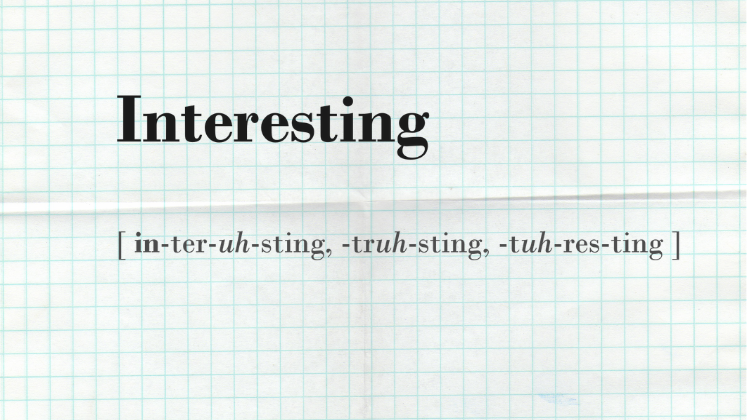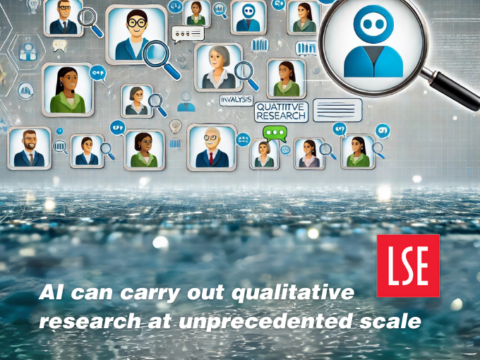
Academic writing is often criticised for its tendency to be arid and unengaging, but what makes a paper interesting? Whilst there is always an intangible element to the quality of being interesting, Manuel Goyanes draws on a study of journal editors in the field of communication studies to outline five dimensions that contribute to a paper being interesting and hence influential.
As social scientists, we want to produce interesting and influential studies. The dominant view in academia is that research is a quest for truth and thus, a research paper becomes influential if it is regarded as true. However, like other occupations, research is a matter of craft. A professional architect, musician, or painter, can easily design a chalet, compose a toccata, or paint an impressionist canvas, by following the principles, norms and values of their respective fields. However, from the generation of standard commodities, by obeying the rules, to the design of fascinating works, by transgressing them, lies a great leap.
Like art, interesting research may seem nebulous, frugal and volatile, but there are certainly some dimensions that are able to capture it.
Likewise, in my own field, doing communication research is up to a point not hard. Following the research orthodoxy, a communication scholar could effectively create legitimate science. Indeed, hundreds of research studies are published every year that feature legitimate science, but how many of them are interesting? Interesting research is not only a representation of scientific truth, but is also a call to the appreciation of human creativity, its vocation of rupture and its ability to stimulate and challenge. Like art, interesting research may seem nebulous, frugal and volatile, but there are certainly some dimensions that are able to capture it. So, what is interesting in communication research? In a recent study, I posed this question to the editorial boards of top-tier communication journals, opening up a discussion germane to the need (or not) to challenge the over-standardisation of research productions. Here, I outline five different dimensions that emerged from these discussions.
Counterintuitive
Above all, studies that challenge the assumptions of their audience are regarded as interesting and thus more likely to be read, understood, and remembered. Challenging the ontological, epistemological, and methodological assumptions that underlie specific literature can be characterised as challenging paradigmatic assumptions. Given their revolutionary nature, ground-breaking studies are, however, very rare in sciences and are for most scholars beyond reach. As the philosopher of science Thomas Kuhn suggested, the bulk of scientific work is done by normal scientists tied to specific research paradigms. However, healthy knowledge production requires a balance between the development, refinement and exploitation of existing knowledge and methods and the exploration of possible new directions. A central question, therefore, is how a good trade-off between cumulative competence and a capacity to think differently can be accomplished. Short of initiating a wholesale paradigm shift within the discipline, there are ways in which research can be counterintuitive. For instance, counterintuitive articles, critically problematise a particular theoretical framework, a vocabulary and/or the construction of an empirical terrain. They also show creativity and personality in style and structure and communicate an original, interesting idea offering support for it.
Foundational articles
Foundational articles are studies that establish the tenets of future large-scale research areas and, as a consequence, their impact on the field can only be measured over time. Pioneering articles are often the products of a field’s great masters and as such represent the starting point of an academic trajectory, for which they serve as a reference point for revision, improvement and further contributions. Foundational research articles also provide the tenets of an original theory that will become systemic. Their practical and theoretical relevance makes them a crucial resource for many research projects and essential reading for research and learning the foundations of theory.
The new approach
The new approach consists of two strategies: (1) the application of an established theory in new-found (usually) digital conditions and (2) the application of a traditional theory/perspective from other fields to understand and explain related phenomena. Both strategies present important commonalities. First, instead of a strong and narrow focus on some issues within a well-defined, specialised intellectual terrain, the broad spectrum of new approach articles open up research opportunities through cross-fertilisation of theoretical frameworks, enriching the field and scholars’ research competence. In the first strategy, researchers are driven forward by an exploratory logic dominated by the questions; ‘Why?’ ‘So what?’ and maybe above all ‘What if? These broad questions open new possibilities to apply theories and perspectives and test their explanatory power in new settings. In the second strategy, researchers engage in broader scholarship as a way of getting ideas and inspiration from varied sets of literature, types of research projects and social groups. It allows the explanation of empirical evidence borrowing perspectives, theories or ways of reasoning from scientific terrains outside the usual suspects.
Quality and exemplarity
Quality and exemplarity papers describe what has broadly, but in particular in the context of publishing in leading communication journals, come to be regarded as ‘sound research’: papers solidly grounded in theory and well executed methodologically. They represent excellence in theory building/testing and orthodoxy in scientific practice and methodological rigour. Quality and exemplarity research articles fundamentally test, extend, or build new communication theory. Therefore, research articles must make strong empirical and theoretical contributions and should highlight the relevance of those contributions for current discussions in the field. In order to accomplish the intended ‘theoretical contribution’, quality and exemplarity articles usually follow three strategies: (1) to test intuitive or traditional theory not supported by empirical research, (2) to build new theory based on the exploration of the mediators/moderators and the antecedents/consequences that explain the relationship of core constructs in a validated theory, and (3) to combine both previous strategies.
Insightful and Practical
Finally, Insightful and Practical are those empirical studies that provide rich examples and vivid (thick) descriptions. For this dimension, much credit is given to writing itself, and thus to narrative mastery and rhetorical aesthetics. This last category proves that writing with personality and empiricism is a possible combination. This scholarship comprises mostly of qualitative studies, based on interviews, focus groups and/or observations to gather empirical evidence, relying on critical perspectives to frame the study and interpret this evidence. In insightful and practical studies, authors are also supposed to point out the normative and practical implications of the findings and thereby to address potential actions, visions or considerations that improve the situation of particular communities and provide relevant information to facilitate the implementation of practitioners.
The purpose of this research was to explore what constitutes interesting research. This was motivated by a widespread concern that mainstream research is invariably the product of standardised research practices promoted by scientific journals. My intention is that the dimensions outlined above provide useful insights and a framework for authors, reviewers and editors to better assess their scholarly contributions. As an antidote to dull research (readers can use their judgement and experience to delimit its extension). Whereas advice to academic authors often focuses on the need for specialisation and incremental advance, I have sought to shed light on a wider range of criteria that underscores research that is truly interesting.
This post draws on the author’s article, Against dullness: on what it means to be interesting in communication research, published in Information, Communication & Society
Thank you to the LSE Impact Blog for allowing us to share this post, to view this original of this post and more great content from the LSE, visit: https://blogs.lse.ac.uk/impactofsocialsciences/
Note: This article gives the views of the author, and not the position of Dementia Researcher, NIHR, LSE Impact Blog, nor of the London School of Economics.

 Print This Post
Print This Post




